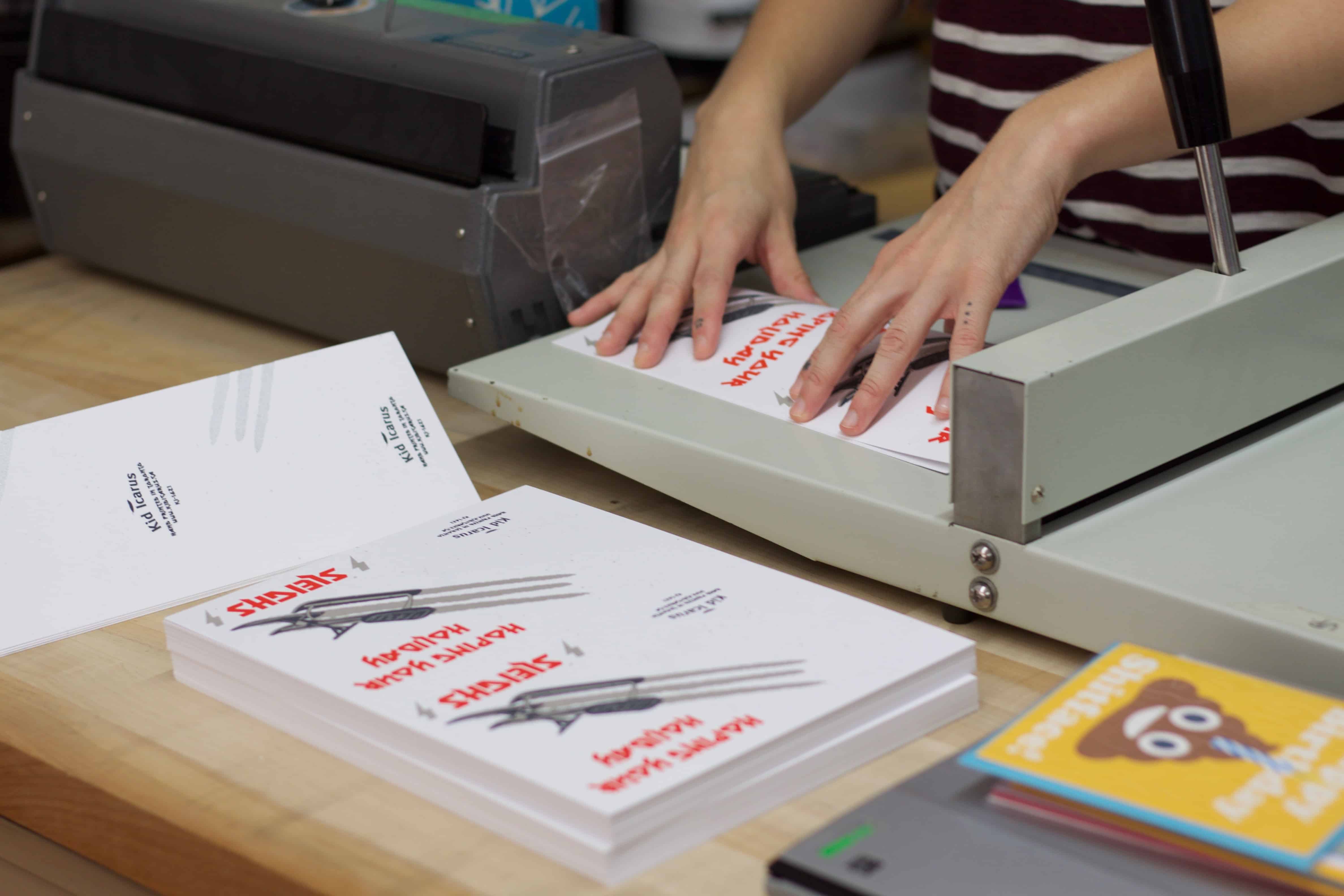The surge of the digital age has inspired new and exciting media in the visual arts. They allow almost everyone with an iPad to become a painter. In some cases, this is not always a gain. Inventions like the inkjet printer strip away the act of printing from the artist and phase out individually printed images that have unique character.
One discipline in particular, however, continues to undermine modernization and accessibility: printmaking. In Toronto, local artists and establishments are keeping the craft alive by embracing the old techniques and paying homage to its history in today’s lithium-powered world.
Printmaking encompasses various methods of transferring designs onto a surface. Etching, woodblock, lithographs, and screen printing are some of the most common methods of traditional printmaking. In the mid 2000s, screen printing gained popularity in Toronto.
Michael Viglione, owner of Kid Icarus Print and Gift Shop in Kensington Market, commented on his own experience: “I have a printmaking background and I actually switched from the digital world into screen printing because it’s a lot more visceral [and] tactile,” he said. “We are actually mixing colours by eye, and we’re relaying them on the screen, we’re forcing ink through a mesh, and there’s a lot of nice feelings with that.”
Kid Icarus started solely as a screen printing shop in 1999 and featured their retail space in 2007. They have become a popular attraction in the neighbourhood by selling work from their own studio and pieces from Canadian artists. They offer screen printing workshops and materials, and notably, they sell accessible, artisanal posters that can bring to life any bland dorm room wall. Much of their merchandise focuses on the hands-on nature of the craft, with handmade banners celebrating Canadian culture, musicians, and events, such as the Polaris Music Festival.
“A lot of bands are back in picking [screen printing] up as a form of advertisement,” commented Viglione, “as a form of having merch.”
Another notable establishment is Open Studio. Located on Richmond Street, it has served as a contemporary printmaking hub for four decades. It hosts exhibitions, courses, events, workshops, and scholarships for aspiring printmaking artists.
Open Studio pioneered the discipline in the early 1970s and 1980s, when printmaking become popular in Toronto; it has since remained a firm supporter of the craft.
Chair of the Board of Directors Lee Petrie is a U of T alumni, having completed a Master’s degree in Museum Studies at U of T and one in Art History at Queen’s University. The gallery makes a point of frequently hosting Toronto-based printers, like Amy Uyeda and Anne Abbas, who both have exhibitions being featured this October.
Other local printmakers focus on printing on cloth, showcasing their artworks on t-shirts and wearable accessories. Sugarbomb, a studio in Wiltshire Avenue, uses screen printing and heat transfer vinyl to print custom designs. Hardboiled in Kensington Market has a similar business model, focusing on screen printing and embroidery in apparel. Artist duo Sustai Ulanbaagen and Tian Yu, owners of Horse Fiddle Press in the Distillery District, express themselves through woodblock printmaking and use shirts and tote bags as canvases for their East Asian-inspired designs.
The computer age has not been all bad, however. Businesses and artisans have their own websites where they can market their products and studios. In the case of Horse Fiddle Press, they are completely web-based, using Etsy and Instagram for marketing.
In a way, new technologies help expose more people to the craft. YouTube is filled with endless tutorials on how to screen print, how to carve woodblocks and linoleum blocks, and other similar techniques. Khan Academy, a producer of short online lectures, has introductory lessons on different styles of printmaking under their Art History section. Despite being the very thing that lead to its decline, the digital age is also working to keep old-school printmaking alive.
Viglione offered one last piece of advice for students looking to get into the printmaking world: “Just grab some materials, jump on YouTube, figure it out… It’s a matter of taking the initiative to go out and try it.”


